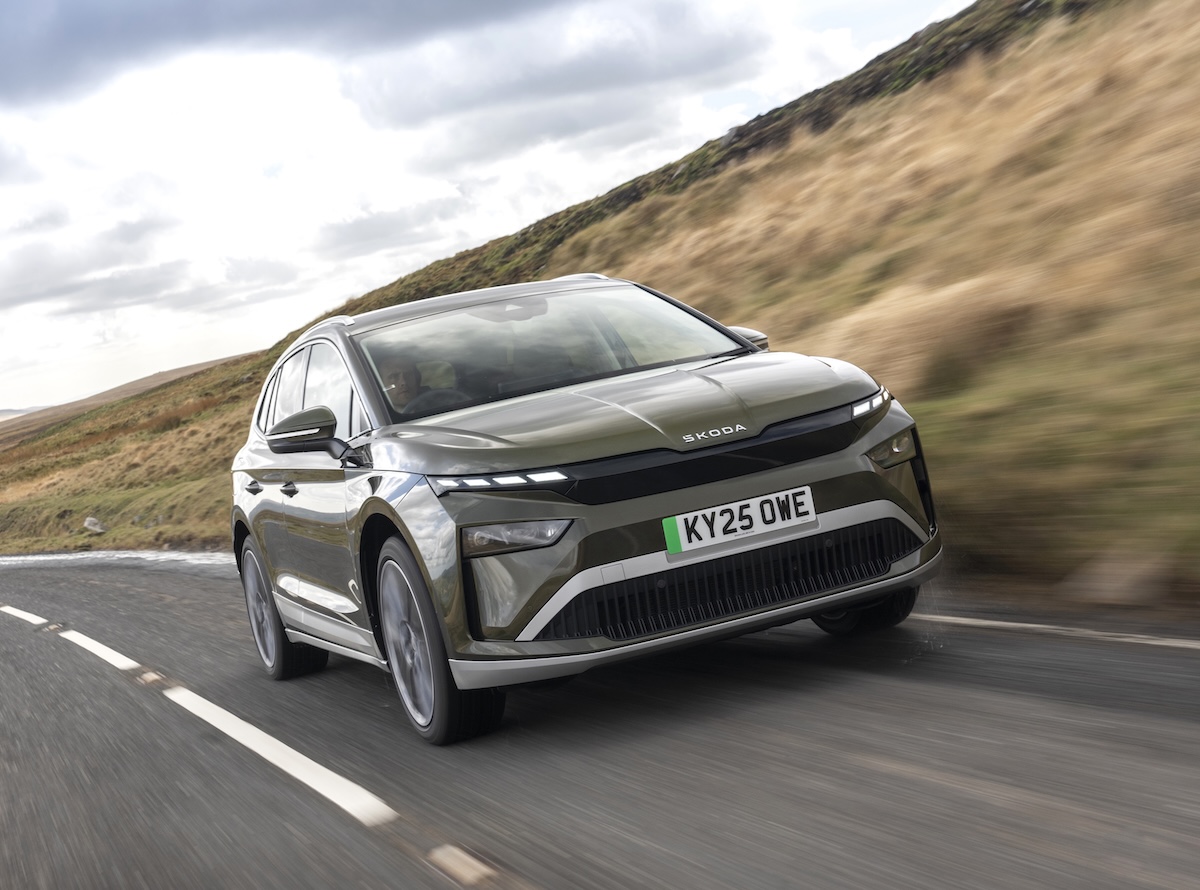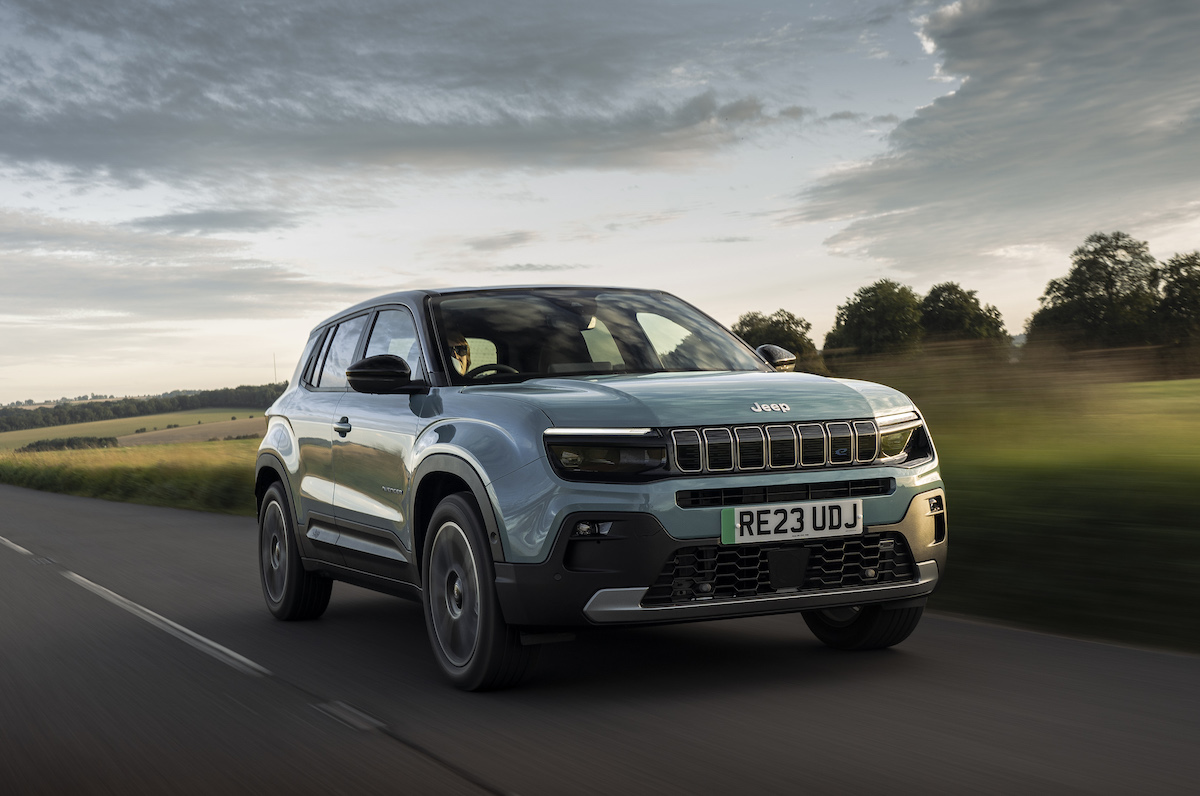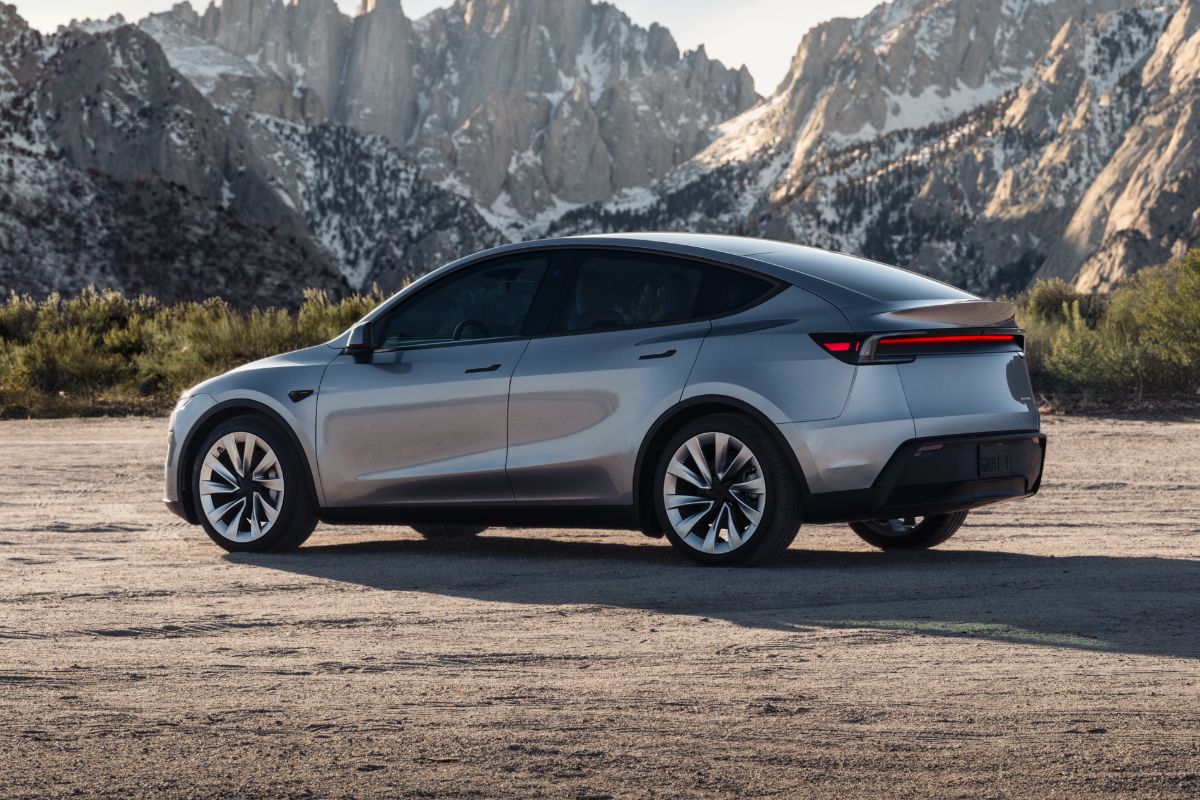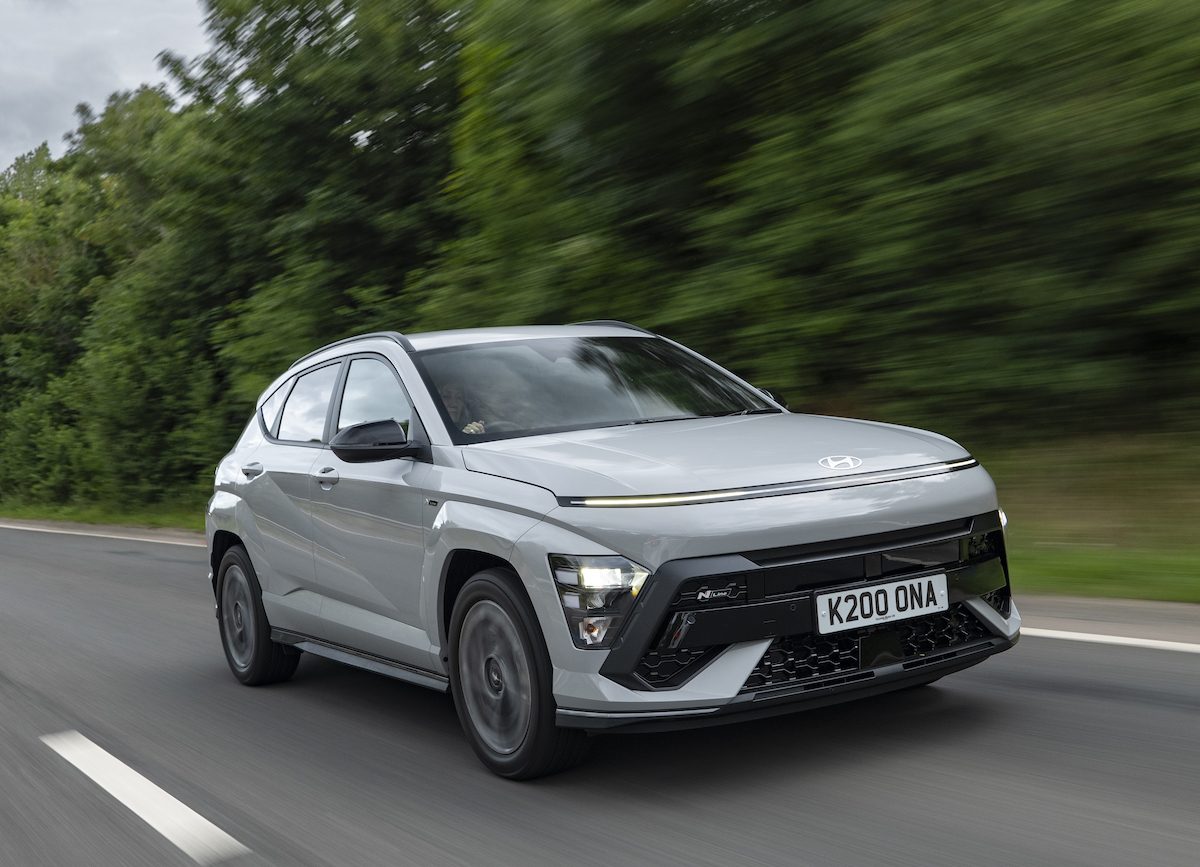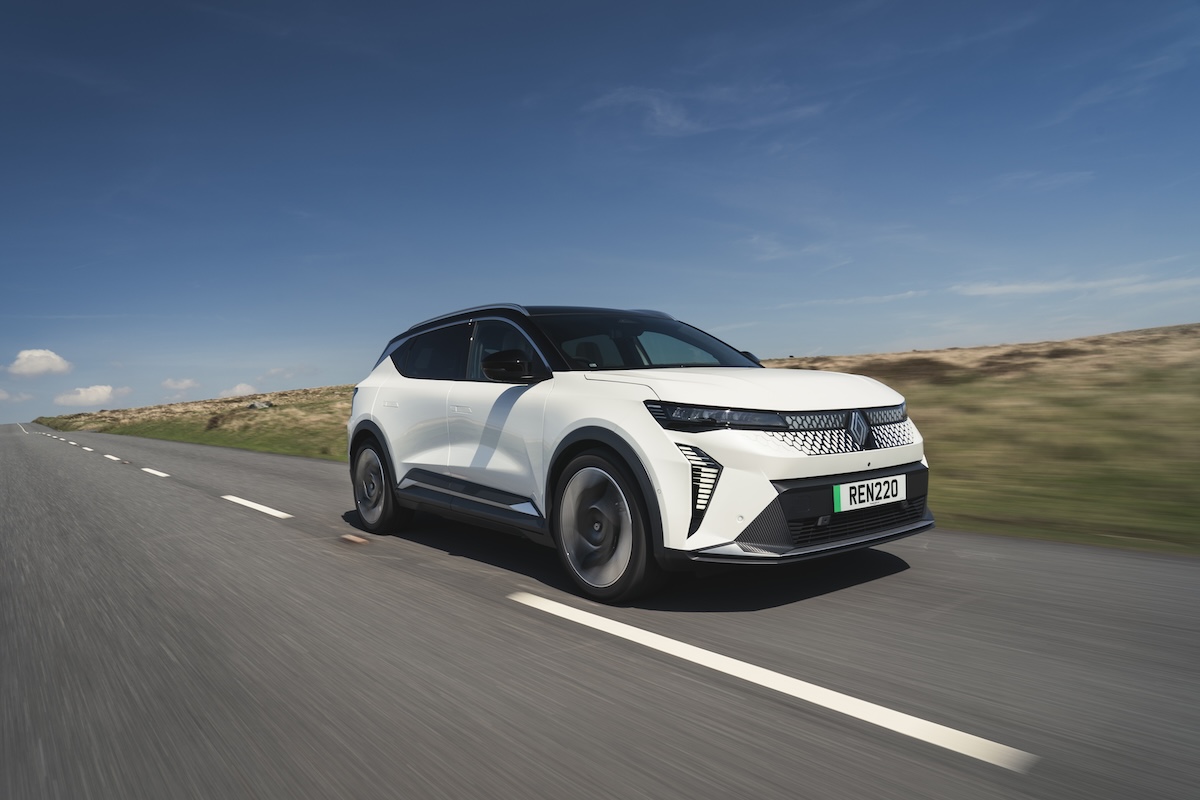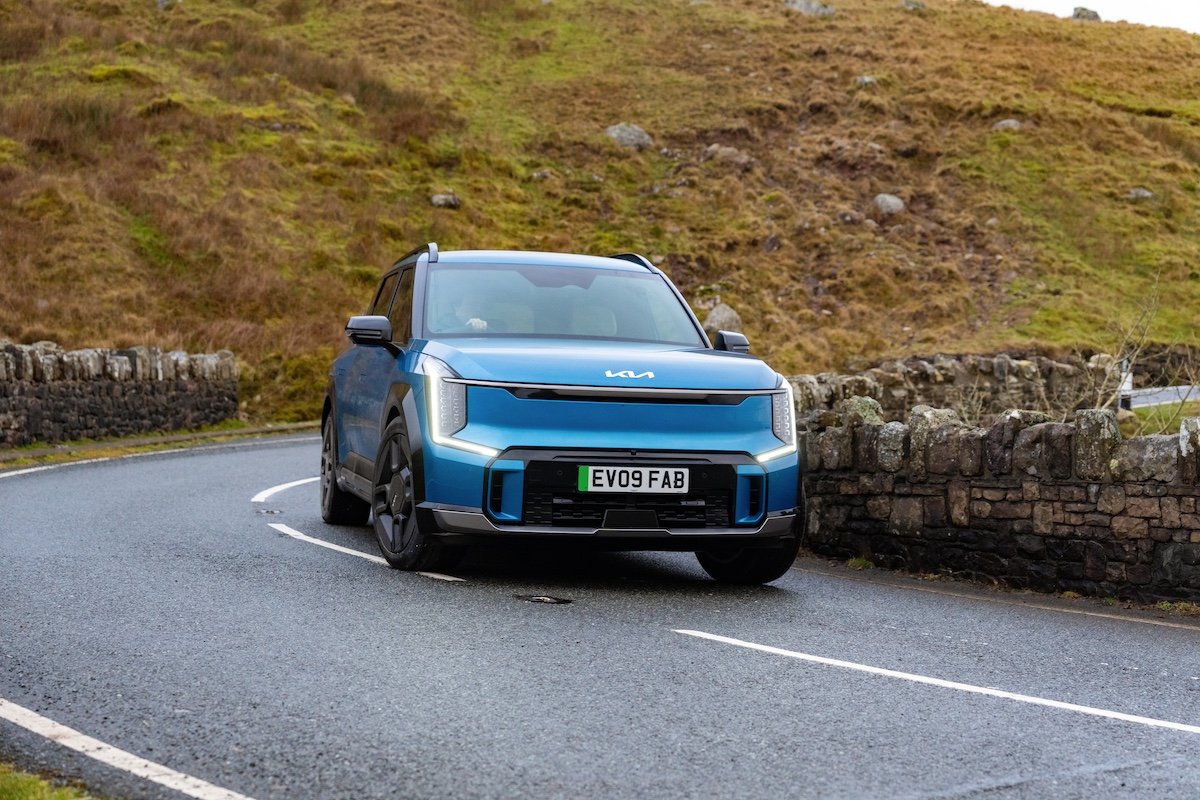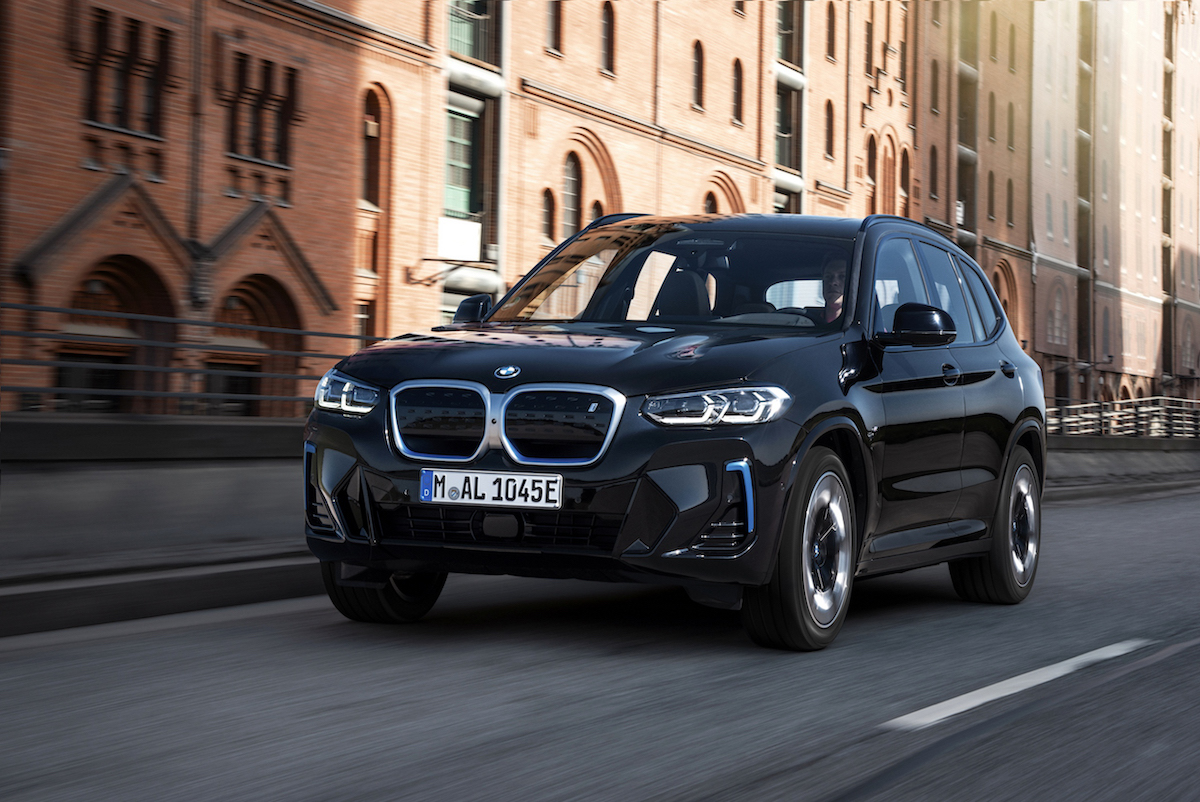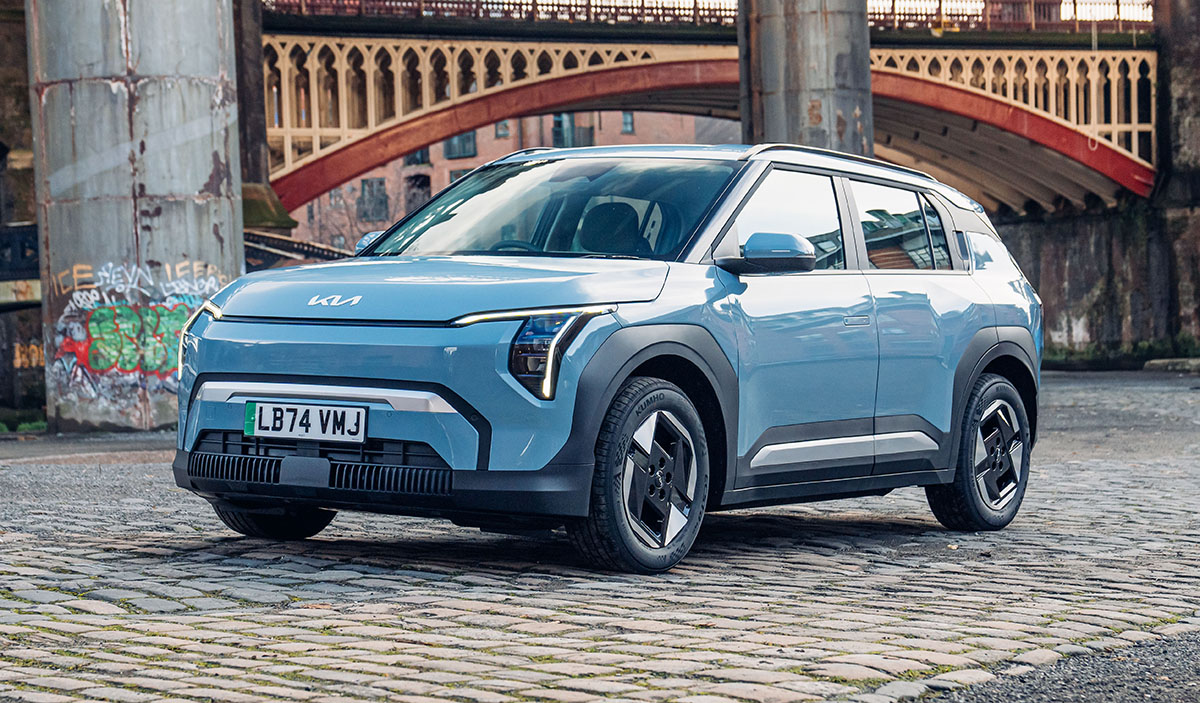Choosing the best electric SUV used to be relativelty straightforward on account of there being so few of them on sale. Not any longer. These days, buyers are faced with a wealth of options that span different brands, sizes, price points, batteries, and more. The best strive to deliver a blend of everyday practicality along with the benefits of zero-emission driving, as well as showcasing the brand values associated with their maker.
From compact models perfect for city living to large seven-seaters designed for family adventures, the variety of electric SUVs available in 2025 is vast. This guide highlights vehicles that excel in key areas such as real-world driving range, interior space, on-board technology, and overall value. Whether you prioritise a long range for motorway journeys, like the Renault Scenic E-Tech with up to 379 miles, or the immense practicality of the seven-seat Kia EV9, there is an electric SUV to suit your lifestyle.
The recommendations in this guide are the result of a comprehensive selection process. Our expert reviewers, with backgrounds at leading automotive publications, conduct thorough real-world testing on every car. We then combine their verdicts with analysis of the CarGurus UK market, identifying models that consistently offer the best deals. Finally, we incorporate ratings from real owners to create an Overall CarGurus rating, ensuring our list reflects not just expert opinion, but also real-world satisfaction and value.
The Best Electric SUVs 2025
- 1. Skoda Enyaq
- 2. Jeep Avenger
- 3. Tesla Model Y
- 4. Hyundai Kona
- 5. Renault Scenic E-Tech
- 6. Kia EV9
- 7. BMW iX3
- 8. Skoda Elroq
- 9. Smart #3
- 10. Kia EV3
1. 2025 Skoda Enyaq
CarGurus expert rating: 5 out of 5 CarGurus user rating: 4.0 out of 5 Percentage of good/great deals available on CarGurus: 31.9% Overall CarGurus rating: 4.2 out of 5
| Pros | Cons |
|---|---|
| Good value relative to EV rivals | Standard equipment could be better |
| Spacious interior and boot | Some issues with touchscreens on early models |
| Comfortable ride | Sporty vRS model not very exicting |
The Enyaq packages everything Skoda does well – practicality, value, and clever features – into a desirable, zero-emission family SUV. Inside, it’s vast. The 585-litre boot is enormous, and rear passenger space is genuinely limo-like, with a flat floor that gives plenty of foot room for a middle-seat passenger. The cabin feels classy and well-built, with a minimalist design that’s easy on the eye. While it doesn't offer a seven-seat option like its (combustion-engined) Kodiaq sibling, as a five-seater it’s one of the most practical and family-friendly electric cars you can buy.
On the road, the Enyaq is quiet, smooth, and does a brilliant job of soaking up bumps in the road, making it an unflappable companion for city traffic or long motorway journeys. Buyers can choose between a shorter range battery (badged ‘60’) or a larger range model (badged ‘85’), the latter offering an official WLTP range of up to 359 miles and a healthy 201bhp. The even more powerful 85X uses the larger battery but with a range reduced to 359 miles on account of its extra performance.
Downsides include that the standard 13.0-inch touchscreen can be a little slow to respond, the lack of physical climate controls is a minor frustration, and the flagship vRS model isn't terribly exciting. Overall, though, the Enyaq is a superbly well-judged electric SUV that offers outstanding space and comfort for the money.
The CarGurus Verdict: "The Skoda Enyaq iV is a fantastic family SUV that stands comparison with anything else of a similar size, regardless of power source. It’s spacious, comfortable, quiet, feels classy and is a tidy, well-judged drive." - Matt Rigby, contributor
Read our full Skoda Enyaq review
2. 2025 Jeep Avenger
CarGurus expert rating: 4 out of 5 CarGurus user rating: 5.0 out of 5 Percentage of good/great deals available on CarGurus: 11.9% Overall CarGurus rating: 4.2 out of 5
| Pros | Cons |
|---|---|
| Rugged good looks | Jeep's patchy past reliability record |
| Compact dimensions but decent interior space | Pricing could be keener |
| Good to drive | Annoying indicator noise |
The Jeep Avenger is the brand's first-ever pure electric SUV, bringing its trademark rugged styling to the small crossover market. Despite its compact dimensions — at only 4.08 metres long this is more of a supermini-sized SUV — it boasts a surprisingly practical interior that can accommodate a small family. Boot space stands at 355 litres, which again is competitive for such a small car. Inside, the interior design is smart and robust, featuring a standard 10.25-inch infotainment touchscreen with wireless Apple CarPlay and Android Auto.
On the road, the Avenger is smooth, comfortable, and quiet, making it a grown-up car you'd be happy to cover high miles in. Its 154bhp electric motor provides sprightly performance for town driving and safe overtakes, although the 0-62mph time of 9.6 seconds is modest by EV standards. The offical range stands at 249 miles courtesy of a 54kWh battery.
Ride comfort is a highlight, with the suspension soaking up bumps effectively, even on larger 18-inch wheels. While it's front-wheel drive only, Jeep has included Selec-Terrain modes (Sand, Mud, Snow) and a generous 200mm of ground clearance, making it more capable on rough tracks than most urban SUVs. If you want a compact EV with a big personality the Jeep is well worth considering.
The CarGurus Verdict: "The Jeep Avenger is a really brilliant little car. It’s swamped with rivals of all kinds in this crowded price arena, from hatchbacks to SUVs and estates, and it’s certainly not the cheapest option of those. But it is fun yet comfortable, practical yet compact, full of ‘want one’ cheekiness and prices are competitive." - Chris Knapman, editorial director
Read our full Jeep Avenger review
3. 2025 Tesla Model Y
CarGurus expert rating: 4 out of 5 CarGurus user rating: 4.3 out of 5 Percentage of good/great deals available on CarGurus: 33.2% Overall CarGurus rating: 4.1 out of 5
| Pros | Cons |
|---|---|
| Excellent range and rapid charging | Interior quality not at BMW or Mercedes levels |
| Lots of standard kit | Would really benefit from a head-up display |
| Roomy and practical | Firm ride |
The Tesla Model Y is one of the most practical electric SUVs you can buy, making it a brilliant choice for families. Passenger space is vast, with loads of legroom in the back. There's also an 8-inch touchscreen to keep the kids entertained. While its official 854-litre boot capacity is measured to the roof (and thus not directly comparable with rivals), the space is still huge, and is supplemented by a large 'frunk' under the bonnet. A 2025 facelift improved the interior quality with soft-touch finishes and ambient lighting, though it still lacks Apple CarPlay and Android Auto and relies on its standard 15.4-inch central touchscreen for almost all controls.
That significant update in 2025 also improved the previously harsh ride, making the Model Y a much more controlled and comfortable family SUV. It remains enjoyable to drive, with nicely weighted steering and thrilling acceleration, especially in the Long Range All-Wheel-Drive model which hits 0-60mph in just 4.6 seconds. The Model Y is also very efficient, with Long Range models achieving a real-world range of 280-340 miles. When you do need to top up, access to Tesla's excellent and affordable Supercharger network makes it one of the best EVs for long-distance touring.
The CarGurus Verdict: "The Model Y is competitively priced next to other rapid, premium electric SUVs, promises to hold its value better than most, and will be one of the best touring EVs thanks to the decent efficiency, rapid charging speeds and access to the excellent Tesla Supercharger network." - Vicky Parrott, contributing editor
Read our full Tesla Model Y review
4. 2025 Hyundai Kona Electric
CarGurus expert rating: 3 out of 5 CarGurus user rating: 4.8 out of 5 Percentage of good/great deals available on CarGurus: 34.7% Overall CarGurus rating: 3.9 out of 5
| Pros | Cons |
|---|---|
| Roomy, practical cabin | Merely so-so to drive |
| Great infotainment system | Cabin could feel posher |
| Generous standard equipment | Should be more comfortable |
The second-generation Hyundai Kona has grown in size compared with its predecessor, resulting in a much more practical SUV. It has a roomy cabin with a good amount of headroom and legroom for passengers. There's also a large (by class standards) 466-litre boot, which has a useful square shape, too. Up front, the driver is treated to a high-tech environment with twin screens for instruments and infotainment, the latter of which works really well with its logical menus and sharp graphics. While the interior quality feels solid and well-assembled, it's not particularly posh, with a fair amount of hard plastic surfaces.
While the wider Kona range includes petrol and hybrid options, it's the Kona Electric that is by far the most impressive. It is available with a 65kWh battery with a 215bhp motor for strong performance. Perhaps the car's biggest downside is the cacophony of bongs and pings from the various active safety systems, which can be distracting. These can, thankfully, be switched off if preffered, Overall, though, the Kona Electric offers a great mix of space, practicality and value.
The CarGurus Verdict: "It’s a very decent all-rounder, though, so if space, practicality, equipment and value are more important to you than dynamic polish, it’s certainly worth considering." - Ivan Aistrop, senior editor
Read our full Hyundai Kona review
5. 2025 Renault Scenic E-Tech
CarGurus expert rating: 4 out of 5 Percentage of good/great deals available on CarGurus: 31.4% Overall CarGurus rating: 3.7 out of 5
| Pros | Cons |
|---|---|
| Roomy for passengers | Boot is an awkward shape |
| Good infotainment system with Google maps | Not as practical as a Skoda Enyaq |
| Useful range of more than 300 miles | Rear seats don't slide |
The Renault Scenic E-Tech comes with a single battery and motor option: a 215bhp electric motor powered by an 87kWh battery, giving it an impressive official WLTP range of up to 379 miles. Charging speeds can reach up to 150kW, allowing for a 10-80% top-up in about 30 minutes. While passenger space is excellent, the boot is a slight letdown. Although its official 545-litre capacity is generous, the space is very deep, which can make loading heavy items awkward without the optional false floor.
On the road, the Scenic E-Tech is comfortable and smooth, and the performance (including a 0-62mph time of 8.4 seconds) is perfectly adequate for family duties. Inside, the technology is a real highlight. Every model gets a 12-inch portrait touchscreen that runs on Google’s software, providing excellent built-in maps and seamless smartphone integration with wireless Apple CarPlay and Android Auto. Standard equipment is very generous, with every model featuring a heat pump for more efficient cold-weather running, heated seats, adaptive cruise control, and a full suite of parking sensors.
The CarGurus Verdict: "The Scenic E-Tech is a seriously smart, capable and comfortable family EV, that matches great passenger space with lots of tech and one of the longest driving ranges available at its price point." - Vicky Parrott, contributing editor
Read our full Renault Scenic E-Tech review
6. 2025 Kia EV9
CarGurus expert rating: 4 out of 5 Percentage of good/great deals available on CarGurus: 34.1% Overall CarGurus rating: 3.7 out of 5
| Pros | Cons |
|---|---|
| Imposing looks | Some slightly disappointing cabin materials |
| Hugely practical seven-seat cabin | Dynamically very average |
| Even entry-level car is stuffed with tech | Rear visibility isn’t great |
As Kia's flagship electric car, the EV9 is a huge and luxurious seven-seat SUV designed to compete with premium brands like Audi and BMW. It's exceptionally large and exceptionally practical, with immense space in the front and flexible middle-row seating. Even with all seats in use, there's a useful 333 litres of boot space, while folding down the third row makes the EV9 a rival to pretty much anything else out there. Technologically it's a standout, featuring a sophisticated infotainment system with twin 12.3-inch screens and a massive amount of standard equipment, even on the entry-level 'Air' model.
All versions use a large 99.8kWh battery. The entry-level 197bhp rear-wheel-drive model offers an official range of 349 miles, while the more powerful 378bhp all-wheel-drive versions provide a range of 313 miles. A key advantage is the EV9's 800-volt architecture, which allows for ultra-fast charging. At a powerful enough public charger, it can gain 155 miles of range in just 15 minutes, making long journeys remarkably fuss-free.
The CarGurus Verdict: "While it’s very solidly made, the interior materials don’t have the lustre of those in the premium cars that Kia intends to take on with the EV9. However, if you want a hugely capable all-electric family SUV that’s totally fuss-free to live with, then it simply has to be on your shortlist." - Chris Knapman, editorial director
7. 2025 BMW iX3
CarGurus expert rating: 4 out of 5 Percentage of good/great deals available on CarGurus: 37.5% Overall CarGurus rating: 3.6 out of 5
| Pros | Cons |
|---|---|
| Comfortable ride, thank to adaptive suspension | The ix3 is pricier and slower than a Tesla Model Y |
| Impressive real-world range | A Ford Mustang Mach-E is more practical and costs less |
| Generous equipment | Not as appealing to keen drivers as a Jaguar I-Pace |
The BMW iX3 is a pure-electric family SUV that cleverly packages EV technology in the familiar and popular X3 body. It offers an official range of 285 miles from its 80kWh battery, with a 282bhp electric motor driving the rear wheels. Inside, the cabin is spacious and finished with the high-quality materials you'd expect from BMW, though some rivals offer more flair. Practicality is strong, with a 510-litre boot, although it lacks the front storage or 'frunk' found in competitors like the Tesla Model Y.
On the road, the iX3 is one of the best in its class to drive, offering a reassuringly normal experience for those new to electric cars, as well as the kind of sharp handling BMW drivers would expect. While it doesn't have the startling acceleration of some rivals, its performance is more than adequate for everyday driving and confident motorway cruising. Whether you're a keen driver or just want to get from A-to-B, the iX3 is a really appealing option.
The CarGurus Verdict: "Even with all that competition factored in, the balance of daily usability, sophisticated dynamics and general desirability that the BMW iX3 delivers is hard to fault. If you’re shopping for a posh, electric family SUV, this should be right a the top of your list." - Vicky Parrott, contributing editor
8. 2025 Skoda Elroq
CarGurus expert rating: 4 out of 5 Percentage of good/great deals available on CarGurus: 36.0% Overall CarGurus rating: 3.5 out of 5
| Pros | Cons |
|---|---|
| Loads of room in the back seats | Can be a bit stiff over bumps |
| Smooth and stable on the motorway | No heat pump as standard |
| Lots of storage space | Boot not as big as in some rivals |
As the all-electric alternative to the hugely popular Karoq, the Skoda Elroq is a pragmatic and practical family SUV. True to Skoda's 'simply clever' philosophy, the interior offers excellent passenger space, great visibility, and numerous storage cubbies perfect for family life. The 470-litre boot has a useful, square shape, though it is smaller than key rivals like the Renault Scenic.
There are several powertrain options, with the Elroq 85 offering a great blend of performance and range, managing around 270 miles in real-world driving. All versions can charge from 10% to 80% in less than 30 minutes on a suitable rapid charger. The ride can feel a little firm on rough roads at low speeds, but it becomes smooth and stable on the motorway. Wind and road noise are also well-controlled, contributing to the Elroq's mature feel. For those seeking more excitement, a high-performance 340bhp vRS model is also available. One notable omission across the range is that a heat pump, which helps preserve range in cold weather, is an optional extra rather than standard equipment.
The CarGurus Verdict: "There are more extrovert family SUVs out there, but the Skoda Elroq’s great strength is the hassle-free way in which it gets the job of providing practical family transport done." - Alex Robbins, senior car reviewer
Read our full Skoda Elroq review
9. 2025 Smart #3
CarGurus expert rating: 4 out of 5 Percentage of good/great deals available on CarGurus: 25.0% Overall CarGurus rating: 3.5 out of 5
| Pros | Cons |
|---|---|
| Smart interior (no pun intended) | Firm low-speed ride |
| Good fun to drive | Overly touchscreen-centric controls |
| Decent value | Boot could be bigger |
The Smart #3 is a coupe-style electric SUV that combines style with family-friendly features. A joint venture between Mercedes-Benz and Chinese automaker Geely, it shares its platform with the Volvo EX30. Despite its swooping roofline, the #3 provides ample legroom and headroom for rear passengers. However, the focus on passenger space comes at the expense of luggage capacity; its 370-litre boot is smaller than what you'd find in rivals like the Hyundai Kona Electric, but a small 15-litre storage area under the bonnet does at least add a little extra practicality.
Inside, the minimalist design relies heavily on a large central touchscreen, which controls almost everything from the climate to the door mirrors, a feature that can be distracting to use while driving. Still, with starting prices under £34,000 and a generous list of standard equipment, the #3 presents a reasonable value proposition in the competitive electric SUV market.
Along with its style, the real selling point of the #3 is its performance, with the standard rear-wheel-drive model producing 268bhp for a brisk 0-62mph time of 5.8 seconds. For those seeking maximum power, the dual-motor Brabus version delivers a staggering 422bhp. The #3 backs up this performance with great handling; it's agile and fun on twisty roads, with sharp steering and plenty of grip. While the ride can feel firm and jarring at low speeds on its large 19- or 20-inch wheels, it becomes more composed at higher speeds.
The CarGurus Verdict: "If you’re willing to sacrifice a bit of pragmatism in favour of style and fun, the #3 makes a lot of sense. It’s roomy enough to carry kids – and even adults – in the rear seats in comfort, and when you’re on your own and taking the long way home, you’ll even find it capable of putting a smile on your face." - Alex Robbins, senior car reviewer
10. 2025 Kia EV3
CarGurus expert rating: 4 out of 5 Percentage of good/great deals available on CarGurus: 27.8% Overall CarGurus rating: 3.4 out of 5
| Pros | Cons |
|---|---|
| Extrovert styling | Unsettled ride |
| Loads of space for a car of its size | Too many touch-sensitive controls inside |
| Long range | Some cheap-feeling interior plastics |
The Kia EV3 brings the bold, futuristic styling of its larger sibling, the EV9, to the compact SUV class. Its distinctive, blocky design sets it apart from rivals, while the interior is light, airy, and impressively spacious. Rear passengers are treated to vast leg and head room, although it's a shame there's not much room for your feet under the seats. The boot is a generous 460 litres, supplemented by a 25-litre storage area under the bonnet for stashing charging cables. Negatives? Well, some of the plastics feel a bit downmarket for a car in this price bracket, and the touch-sensitive climate controls can be frustrating to use as they are often hidden by the steering wheel.
All versions of the EV3 come with a single 201bhp electric motor driving the front wheels. Buyers can choose between a 58kWh battery with an official range of 270 miles, or a larger 81kWh unit that boosts the range to a very useful 375 miles. Performance is brisk, and the EV3 handles twisty roads with decent body control, though the ride can be jiggly over bumps. While it may not be the most fun-to-drive electric SUV, it offers a compelling combination of space, distinctive style, and excellent range, backed by Kia's seven-year warranty.
The CarGurus Verdict: "It might not be quite as versatile as some of its rivals, but the EV3 packs in a lot of space and equipment, and while some of the interior plastics might not quite match up to your expectations for such an expensive car, it's still a delightful place to be." - Alex Robbins, senior car reviewer
The Best Electric SUVs 2025: FAQs
Which electric SUV has the longest range? The upcoming 2026 BMW iX3 promises a range of around 500 miles from a charge, which will make it the longest-range electric SUV when it goes on sale in March 2026. For now, the 2025 Kia EV3 (with the larger battery option) and 2025 Renault Scenic E-Tech offer some of the longest official ranges in this guide, exceeding 350 miles between charges in optimum conditions. As with any electric car (indeed any car full-stop) the exact efficiency you get will depend on multiple factors including driving style, ambient temperature, traffic conditions and type of road.
Which is the best 7-seater electric SUV? The 2025 Kia EV9 is the standout seven-seat electric SUV. It is exceptionally practical, offering immense space for passengers in all three rows and a useful 333 litres of boot space even when all seats are in use. Its 800-volt architecture also allows for ultra-fast charging.
Are there any good budget-friendly electric SUVs? Yes, several models offer great value. The Jeep Avenger provides rugged styling and a practical interior in a compact package. The Smart #3 is another strong contender, with starting prices under £34,000, a generous level of standard equipment, and a stylish coupe-like design. There's also a whole host of new, more affordable SUVs such as the BYD Atto 3 and Vauxhall Frontera on offer. While none quite make the standard to appear in this guide, they are proof that electric car ownership is becoming more affordable.
What should I look for when buying an electric SUV? When buying an electric SUV, consider its real-world range and how it fits your typical driving habits. Look at charging speeds, especially if you plan on frequent long journeys. Practicality is also key, so check boot space and passenger room. Finally, consider the on-board technology and infotainment system, as many modern EVs rely heavily on touchscreens for primary controls.
What Makes CarGurus Best Cars Guides Different?
Most car buying websites publish lists of the best cars across a variety of categories, with recommendations generally driven by editorial expertise. Here's what makes our best cars guides different: in addition to the insights and verdicts of our team of car-testing experts, our best cars guides take into account other factors that we know matter to buyers - real owner experiences and current market value.
Our expert reviewers are carried out by some of the UK's most trusted automotive publications including What Car?, The Telegraph, Auto Trader, Electrifying.com, and Carbuyer. They put each car through real-world testing, and create detailed reviews noting performance in a range of categories, from practicality and driving manners, to running costs and reliability.
We also analyse hundreds of thousands of used car listings on CarGurus UK to track which models consistently offer the highest percentage of best deals relative to how many are listed for sale. Then we factor in reviews from owners - people who actually live with these cars every day. Our best cars algorithm then creates a final Overall CarGurus rating that combines expert ratings, user reviews, and the percentage of listings on CarGurus UK rated as good or great deals. This three-way approach reveals not just which cars excel on paper, but which ones deliver satisfaction and value when you're ready to buy.
The CarGurus UK market data in this guide was last updated in December 2025. Values were accurate at time of publication and should be used as a guide only.

